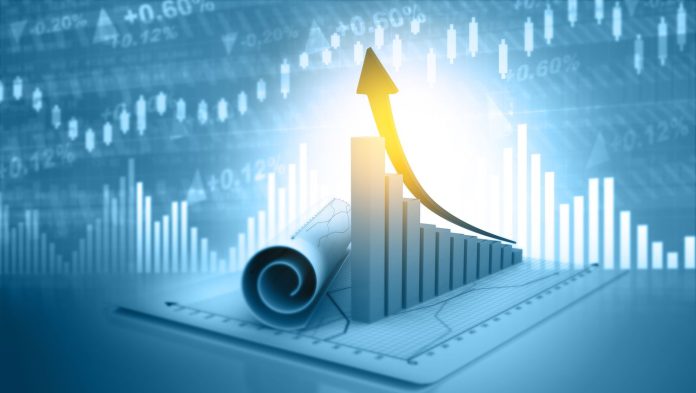New Delhi: The National Statistical Office (NSO) anticipates a 7.3% growth for the Indian economy in the fiscal year 2023-2024, surpassing the Reserve Bank of India’s forecast of 7%, under the assumption of a recovery driven by increased investments in the world’s fifth-largest economy.
This projection significantly exceeds analysts’ expectations, as the majority of economists had anticipated India’s gross domestic product (GDP) to grow in the range of 6.5% to 6.7% for the current financial year. In the previous fiscal year, FY23, the GDP recorded a growth of 7.2%.
As of November 30, data indicates that the Indian economy experienced a growth of 7.7% during the first half (April-September) of the fiscal year 2023-24.
The NSO, in its release on Friday, presented the First Advance Estimates of GDP, which now include industrial production data for an additional month (October) and certain lead indicators until November and December. These estimates implicitly suggest a projected GDP growth of 6.95% in the second half (October-March) of the current financial year.
With the government’s decision to move the Union Budget presentation to February 1, starting from the FY18 Budget, the statistics department has advanced the release of the First Advance Estimates. This adjustment allows the government to have an annual GDP estimate for incorporation into Budget calculations, even if it comes at the expense of some degree of accuracy.
“The First Advance Estimates for FY24 reveal a sustained growth momentum in the economy. The resilience and strength of the economy, bolstered by reforms over the past nine years, provide a solid foundation for maintaining a healthy growth rate in the years ahead,” stated the finance ministry on X.
Regarding the NSO’s estimates, Aditi Nayar, Chief Economist at ICRA, commented, “In our perspective, the growth projected for the second half of FY24 appears to be quite optimistic, considering the subdued outlook for agriculture and concerns about a temporary slowdown in capital expenditure ahead of the general elections. Notably, the central government’s capital expenditure declined by 8.8% during October-November 2023, following a 43.1% increase in the first half of FY24.”
The estimated growth in gross value added (GVA) for FY24 at 6.9% implies an assumption of 6.2% growth in the second half of FY24, which is notably lower than the imputed GDP growth for the same period.
The sectoral growth profile indicates a well-balanced recovery across all sectors, with the exception of agriculture. In FY24, growth in the agricultural sector is expected to slow down to 1.8%, attributed to a poor kharif harvest and slower rabi sowing. Meanwhile, manufacturing growth is projected to accelerate by 6.5% during the same period, driven by the easing of input cost pressures and resulting profit growth for listed companies.
The labour-intensive construction sector is expected to experience a boost, with the NSO estimating a growth of 10.7% in FY24. However, the service sector, which constitutes the largest component of GDP, is projected to grow at a relatively slower rate of 7.7% in FY24 compared to 9.5% in FY23. Within the service sector, the most significant component, encompassing trade, hotels, transport, and communication, is anticipated to expand by 6.3%, influenced by a higher base. The other two components of the services sector, namely financial, real estate, and professional services, as well as public administration, are forecasted to register growth rates of 8.9% and 7.7%, respectively, for the current financial year.
Examination of the expenditure side of GDP for FY24 reveals that investment is the primary driver of growth. Private consumption growth is expected to decelerate to 4.4% in 2023-2024, while government spending is projected to accelerate, growing at 4.1%.
Although the growth in investment demand, represented by gross fixed capital formation (GFCF), is estimated to ease to 10.3% from 11.4% in FY23, it remains a key component of economic recovery. This is largely attributed to the continued emphasis of the central government on capital expenditure (capex). However, the external sector poses a significant challenge to India’s growth, as global growth remains weak. Net exports are anticipated to contribute negatively to real GDP growth, with a deduction of -3 percentage points.
Rajani Sinha, Chief Economist at Care Ratings, has expressed concern about the weak consumption growth indicated in the projected GDP data. She noted that this would mark the slowest consumption growth in the past two decades, excluding the pandemic year of FY21. Sinha emphasized the importance of strengthening consumption growth for sustained investment growth, and she highlighted the critical need for a meaningful increase in private investment in the coming quarters.
The NSO has set the nominal GDP growth at 8.9% for FY24, a figure significantly lower than the 10.5% assumed in the Budget. Some analysts believe this might pose challenges for the government in achieving the fiscal deficit target, unless it is accompanied by savings from key departments. Aditi Nayar of ICRA mentioned, “Based on the nominal GDP for FY24 estimated by the NSO, the Centre’s absolute budgeted fiscal deficit of ~17.9 trillion works out to 6% of GDP, a tad higher than the FY24 BE of 5.9% of GDP.”
D K Srivastava, Chief Policy Advisor at EY India, holds the expectation that the government will meet its budgeted fiscal deficit target for FY24. He attributes this anticipated success to a higher-than-budgeted growth in the Centre’s gross tax revenue. This optimistic outlook is based on the observation of a much higher direct tax buoyancy than initially assumed in the Budget.

